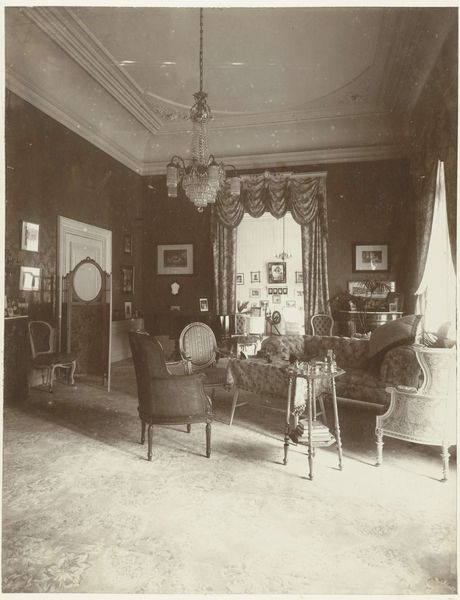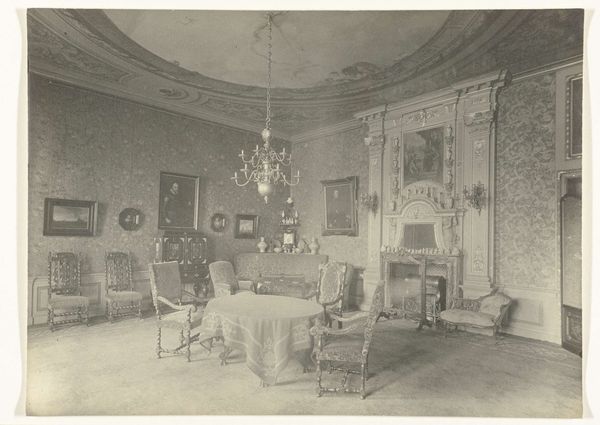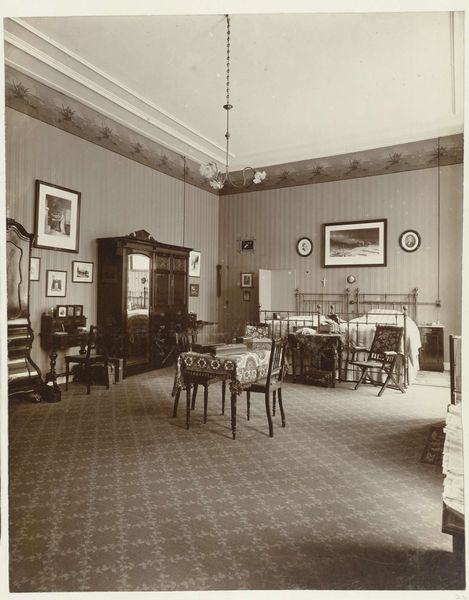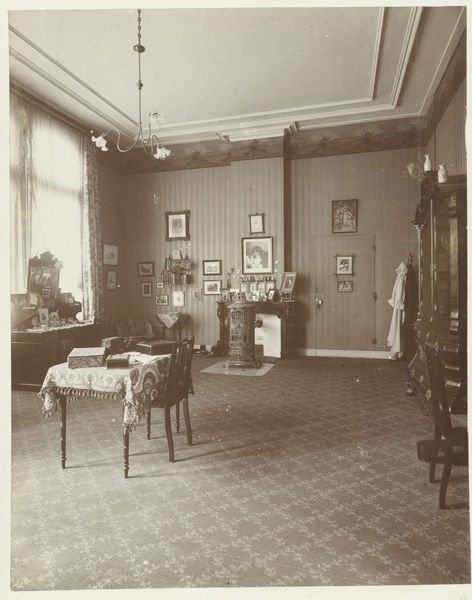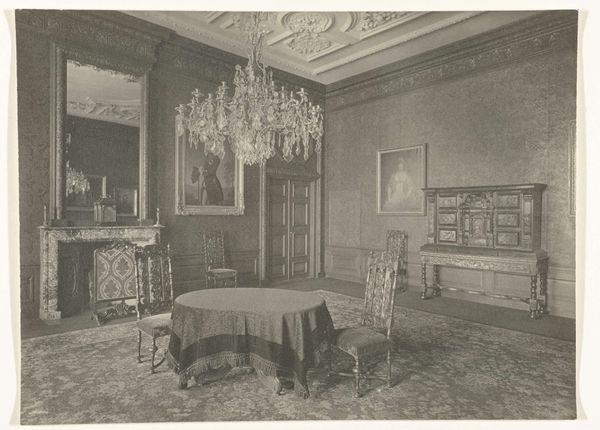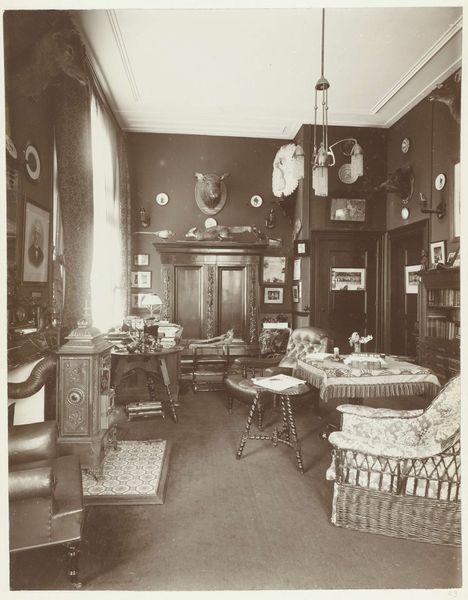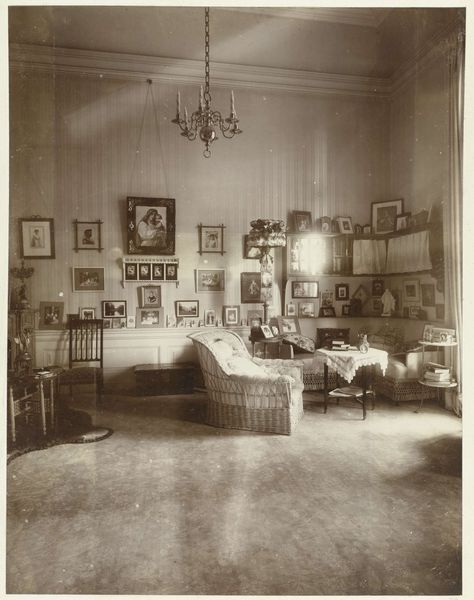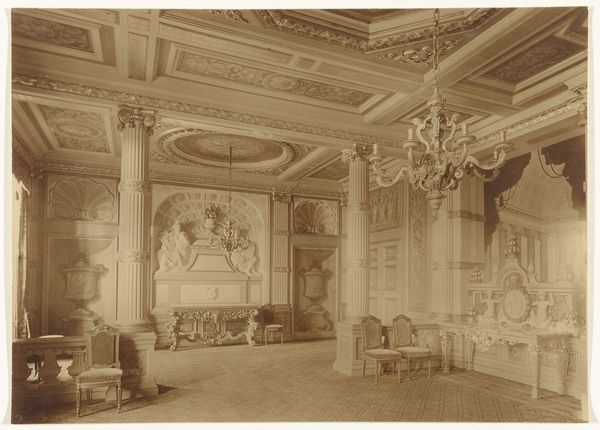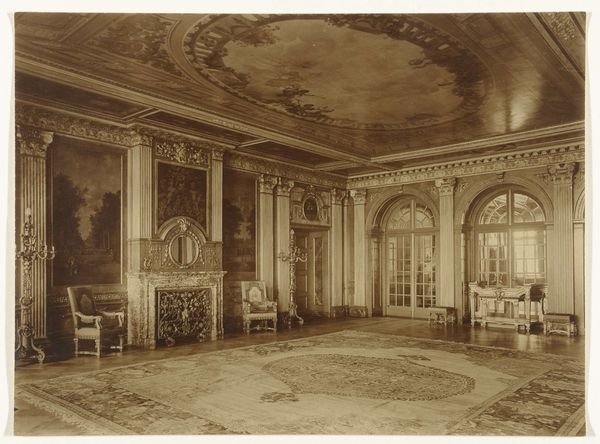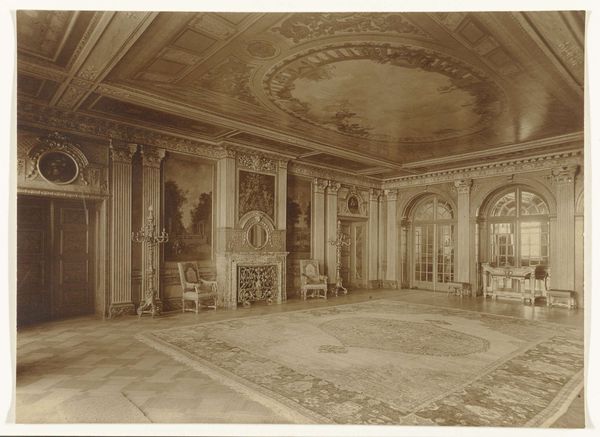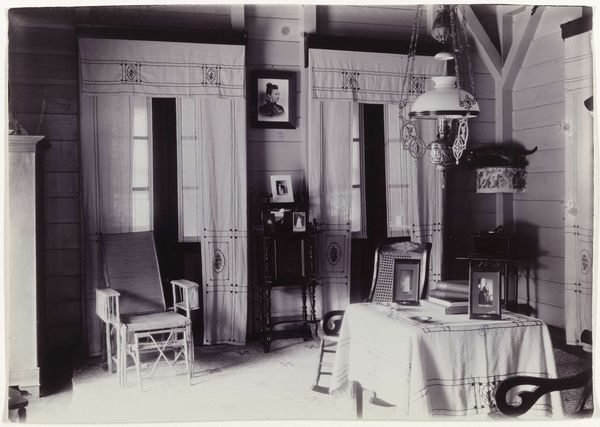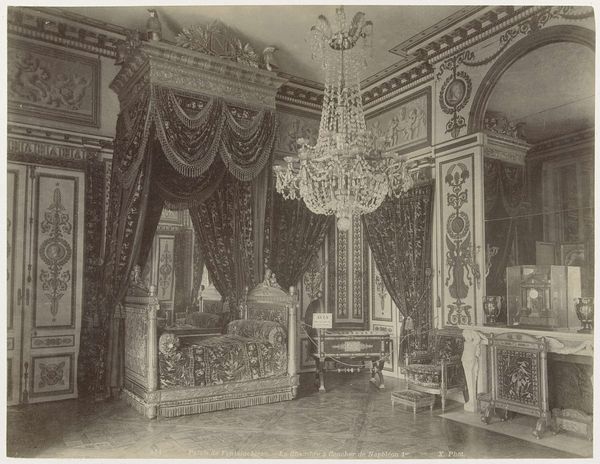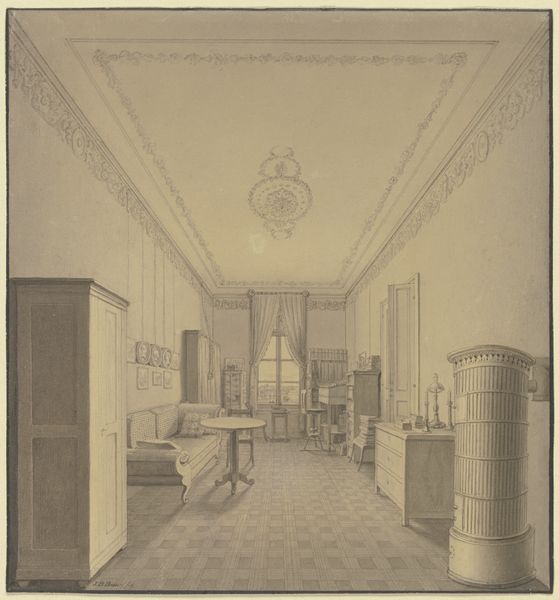
Kamer met zithoek en salontafel in landgoed De Wildbaan, Driebergen 1903 - 1907
0:00
0:00
henrypauwvanwieldrecht
Rijksmuseum
photography, albumen-print
#
still-life-photography
#
film photography
#
landscape
#
archive photography
#
photography
#
albumen-print
Dimensions: height 335 mm, width 520 mm, height 361 mm, width 287 mm
Copyright: Rijks Museum: Open Domain
Editor: This is Henry Pauw van Wieldrecht’s "Kamer met zithoek en salontafel in landgoed De Wildbaan, Driebergen," taken sometime between 1903 and 1907, using albumen print. There's almost a claustrophobic feel to it despite the grand space; all those objects seem to crowd the room. What can you tell me about it? Curator: The density of objects in this photograph speaks volumes about the socio-economic status of the family. The Wildbaan estate itself symbolizes power and privilege. Consider how photographic documentation, especially albumen prints, became increasingly accessible during this period. While portraiture served to further the interests of the bourgeois, photographs of interiors began alluding to private spaces. What message does displaying their belongings convey? Editor: It's interesting to consider the photograph as a status symbol in itself, beyond just the wealth it depicts. Did the rise of photography change what families chose to display? Curator: Absolutely. Prior to photography, families may have invested in portraits or bespoke furniture, items often showcased in specific ways. With photography's proliferation, interiors could be arranged more theatrically, almost as stages for displaying identity. This image shows an awareness of composition; consider the layering of textures and patterns, almost consciously arranged for the photographic eye. The room becomes an aspirational space preserved in time. Editor: So, this isn’t just about documenting the space, but about shaping a particular narrative? Curator: Precisely. And who gets to craft and control that narrative is critical. Consider the labor required to maintain such a space and the societal implications of wealth disparities. This seemingly innocuous interior invites us to look beyond aesthetics and confront the socio-political landscape it represents. Editor: I never considered the staged element of interior photography. It really highlights how constructed even 'realistic' art forms are! Thanks for giving me so much food for thought. Curator: My pleasure. Reflecting on the photograph through socio-political context really reveals the unseen dimensions behind its surface.
Comments
No comments
Be the first to comment and join the conversation on the ultimate creative platform.
